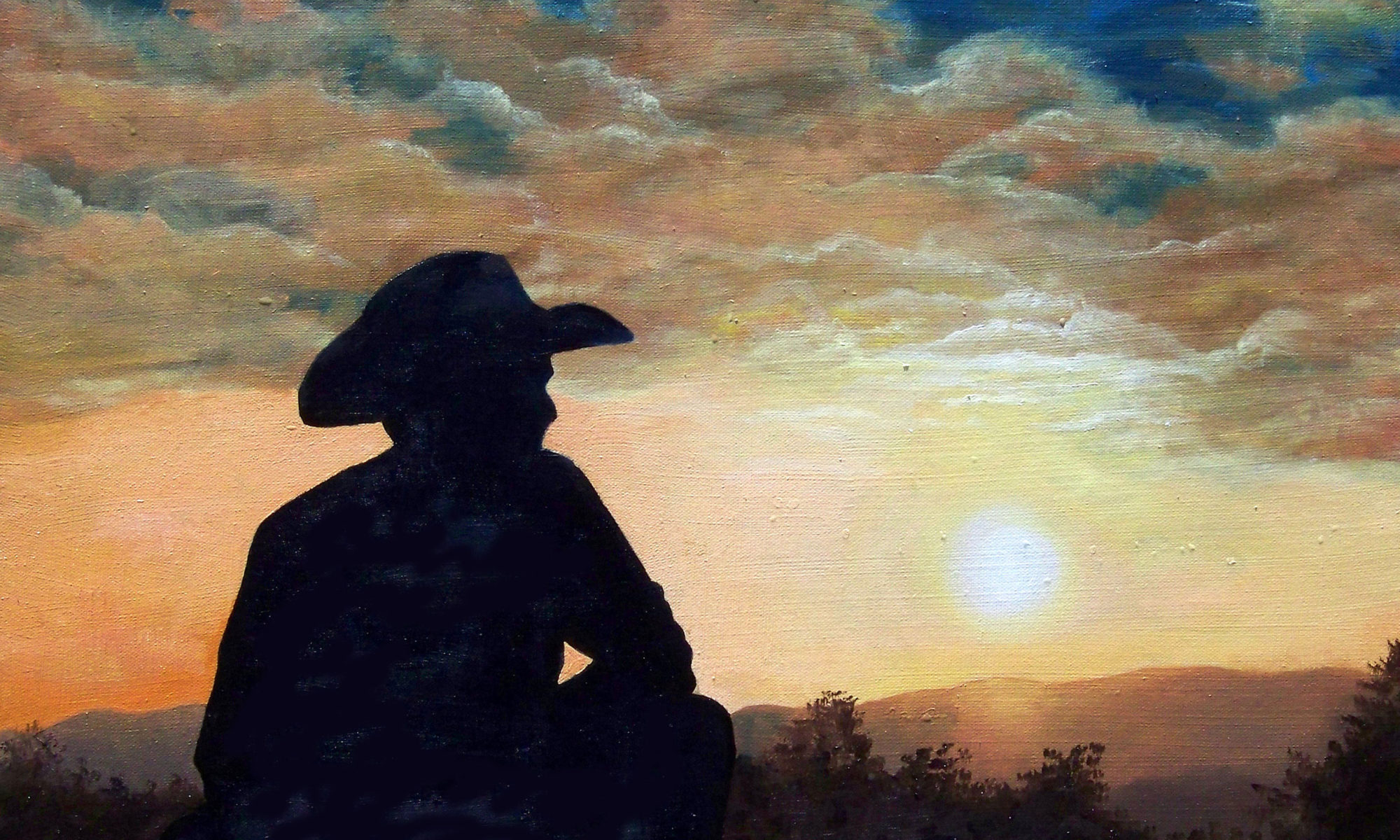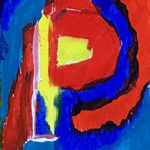
PAINT-BY-NUMBERS ART | PURE SYMMETRY
Quick links to more art terms and definitions are located at the end of the list.
Paint-by-Numbers Art
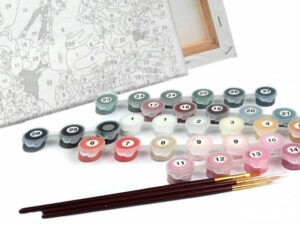
Click or tap the image for a close-up view showing the numbered areas.
A painting method where the artist paints on a pre-labeled canvas, with each section marked by a number. These numbers match specific paint colors designated for those areas. By painting each section with the corresponding color, the artist gradually completes the entire painting. Paint-by-numbers art usually comes in a kit that consists of canvas, paint, and brushes. This process involves no originality of thought or creativity on the part of the artist.
Paintbrush
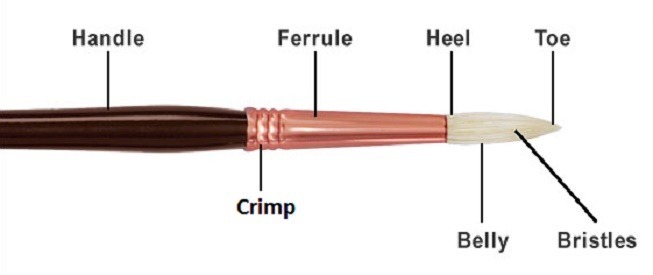
An artist’s tool of the trade used to apply paint, watercolor, or ink to a surface. In fact, it’s the most important tool an artist uses. Paintbrushes come in various sizes, shapes, and materials. It’s hairs or bristles are held in place by a ferrule attached to a handle. Other parts of the brush are the toe, belly, heel, and crimp. The quality of the hair determines the brush’s quality and cost. Each type of brush has a specific purpose, and different fibers are used for different mediums. See “brush anatomy” for more information.
Painterly Art
An art style that celebrates the specific medium it was created with, such as oil paint, acrylics, pastels, or watercolor. In painterly works, artists embrace the texture and movement of these materials, resulting in visible brushstrokes. The focus is on expressive color, bold strokes, and a more textured appearance.
Painting
The act or process of using a brush to apply paint or other medium to a surface, such as canvas, to create a picture or other artistic composition. It also refers to a painted representation or composition.
Painting Knife
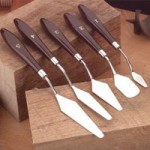
A tool used by artists for applying paint to canvas. The painting knife comes in various styles and sizes. The most commonly used has a diamond-shaped head with a crooked handle. The bend in the handle is so the knife head can be held flat against the canvas without touching the wet surface with your fingers or knuckles. A painting knife may be used with any paint—acrylic, watercolor, or oils. However, oil paint lends itself best to this style of painting because of its thicker consistency. Some artists do entire paintings using a painting knife instead of a brush. Cleanup is much easier than using a brush. Simply wipe the knife clean using a paper towel or cloth.
Please note, a painting knife serves a different function than a palette knife, however, many painters use the two terms interchangeably, and this is ok. For more information, refer to “palette knife.”
Palette
A word in the English language that has more than one meaning. It can refer to a selection of colors used in a color scheme, or the tool used by an artist to mix colors.
In painting, an artist’s palette is the surface they use to mix paint. There are various types of palettes available made from various materials like wood, paper, and plastic, and come in various shapes and sizes. It’s a matter of personal preference which type, shape, and size to use.
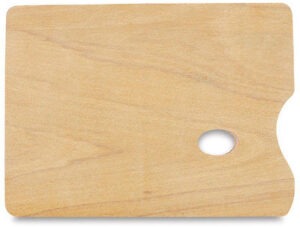
The wooden painting palette is the most traditional of the artist’s painting palettes and was the one used by the Old Masters. Wooden palettes today are manufactured and sealed with a varnish or lacquer. This is important as it helps to prevent the palette from absorbing all the oils from your paint.
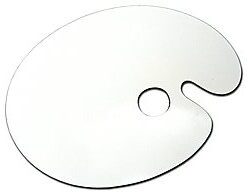
Another popular material for an artist’s painting palette is plastic. Plastic palettes are durable enough to withstand solvents and work well with oil paint. They can be scraped clean and are more adaptable to soap and water than a wooden palette. Usually, these are made of non-staining, white plastic.
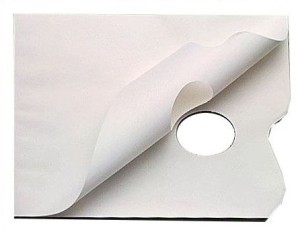
Disposable painting palettes are pads of waxy paper that come with or without a thumbhole. The top sheet is torn off and used for a painting session. When the session is over, the sheet is disposed of. This makes for a quick and easy cleanup. Some artists find this type of palette convenient, particularly for the classroom or Plein air painting.
Palette Knife

A blunt tool used by artists for mixing paints and scraping a palette clean when a painting session is over. Its design, featuring a straight blade and handle, makes it unsuitable for applying paint to canvas. The tool used for actual painting on canvas is called a “painting knife.” However, it’s common for artists to use the term “palette knife” to refer to both types of knives, which is perfectly acceptable. For more information, refer to “painting knife.”
Pantone Matching System (PMS)
A standardized color system that catalogues nearly 5,000 subtle color shades and variations. Designers and printing manufacturers use this detailed color numbering system to standardize and accurately match colors. It helps overcome the common variation of printed colors when using CMYK. The system assigns unique identification numbers to specific colors, ensuring precise color reproduction across different media and materials.
Paper Filigree
(Also called quilling.)
The craft of create intricate designs by coiling and shaping thin strips of paper. Paper filigree is a papercraft that has been popular since the 15th century.
Paper Mâché
A versatile crafting technique that uses paper and adhesive to create a variety of objects. The process involves layering moistened paper strips (or other materials) onto a blank surface, such as a balloon or cardboard. The adhesive acts as a binding agent, and as the paper dries, the outer shell hardens.
Papyrus
The predecessor of modern paper made from the pith of the papyrus plant used by the ancient Egyptians, Greeks, and Romans.
Partial Abstraction
A type of abstract art. In partial abstraction, artworks still feature identifiable objects, people, or landscapes. However, these elements are often simplified, distorted, taken out of context, or rendered in non-realistic colors.
Partitive Color
(Also known as optical mixing.)
Refers to the perception of color resulting from the combination of adjacent colors. Unlike physical mixing where colors are physically blended (like mixing paint), partitive color occurs perceptually—between our eyes and our brain. Imagine it as the way colors appear on a television screen, where they’re not physically mixed but blend optically to create new hues.
Pastel
An art medium traditionally used on paper or other surfaces with sufficient tooth and texture. They come in various forms, including sticks, squares, pebbles, or pans of color. Most pastels consist of powdered pigment combined with a binder. The binder helps hold the pigment together.
Types of pastels:
-
- Soft Pastels: These are the most popular and traditional type. They contain a binder similar to watercolor (gum arabic), resulting in a smooth and flexible texture. Soft pastels have a high pigment-to-binder ratio, making their colors bright and vibrant.
- Hard Pastels: The opposite of soft pastels. They have a higher amount of binder and a lower amount of pigment. While their colors remain vibrant, the increased binder results in a stronger and stiffer texture.
- Oil Pastels: Made of pigment, wax, and oil, oil pastels are more like crayons. They’re creamy, versatile, and can be used on various surfaces, including paper, canvas, and even fabric.
Pearlescence
An effect related to iridescence where a surface seems to shimmer with different colors. In this case, light reflects off structures, with a significant portion of the light being white, endowing the object with a pearly sheen. In the automotive industry, pearlescence also refers to specific types of paint finishes.
Pentimento
(From the Italian word “pentirsi,” meaning “to repent.”)
A term in art that refers to the visible evidence of changes made by an artist during the creation of a painting or other artwork. This can manifest in various ways, such as underpainting, layering, or composition modifications. Pentimento occurs when an artist makes alterations to their work, usually hidden beneath subsequent paint layers. These alterations can be detected using methods such as X-rays, infrared reflectography, or meticulous inspection.
Perfect Symmetry
Refers to a precise and balanced arrangement of visual elements within an artwork creating a sense of order and equilibrium. Perfect symmetry occurs when an artwork is divided along a central axis, and the elements on one side are precisely mirrored on the other side.
Permanent Pigment
Refers to any pigment expected to last or remain without essential change and is not likely to deteriorate under certain atmospheric conditions, in normal light, or in proximity to other colors.
Perspective
A technique used by artists in drawing or painting to create depth and distance in compositions on a flat surface. There are three basic types of perspective: one-point, two-point, and three-point. The one-, two-, and three-point refers to the number of vanishing points present when creating the illusion of depth and space. In addition to these, there is also zero-point perspective.
Types of Perspective:
-
- One-Point Perspective: All lines converge to a single vanishing point on the horizon. Think of a long corridor or a straight road.
- Two-Point Perspective: Here, two vanishing points exist—one for each set of parallel lines (e.g., the sides of a building).
- Three-Point Perspective: This adds a third vanishing point above or below the horizon, allowing for more complex compositions (e.g., looking up at a skyscraper).
Photorealism
A genre of art that encompasses painting, drawing, and other graphic media. Artists in this movement meticulously study photographs and then painstakingly reproduce the images as realistically as possible in another medium. Photorealism became an art movement in the late 1960s and early 1970s in America. For more information on this movement, click here.
Photoshop
A professional image editing and graphics creation software program from Adobe. It’s a versatile and powerful tool that provides a large library of effects, filters, and layers.
Picture Plane
The surface in a work of art that appears as a transparent layer between the observer and the depicted scene. The picture plane, positioned between the observer and the subject, is typically associated with the elements of a painting that lie directly in the line of sight, often constituting the foreground. This concept is instrumental in generating an illusion of three-dimensionality and perspective within the realms of painting, photography, and other visual arts.
Pigment
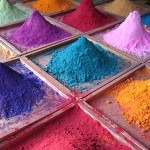
The coloring agents derived from either natural or synthetic substances, used in paints and drawing materials. It is a substance in paint or anything that absorbs light and produces or reflects the same color as the pigment. Pigments are chemically unreactive and are either completely or nearly insoluble in water or another medium.
Pixel Art
A type of digital art where images are created and edited at the pixel level using graphics editing software. Pixels, the tiniest units of light on a digital display, compose all screen elements, including text. Pixel art often recalls the low-resolution graphics of 8-bit and 16-bit computers, arcade systems, video game consoles, LED screens, and graphing calculators. Its distinctive aesthetic features individual pixels as fundamental components, evoking the appearance of mosaic art, cross-stitching, and embroidery. Pixel artists and game studios continue to use this art form in spite of technology limitations, displaying the distinct visual style of pixel art.
Plane (in art)
Any clearly defined flat surface found in artworks, such as paintings or sculptures.
Plein Air
(Pronounced “plane air.” From the French word “en plein air” which literally means “in the open air.”)
Refers to artists going out on location to paint landscapes in the great outdoors with the intention of capturing the quality of light and atmosphere found outside. Artists who work en plein air aim to represent the natural world as they see it, embracing the ever-changing interplay of light, color, and shadow.
Pocket Art
An art movement that combines art and craftsmanship with small items. ACEOs and ATCs are examples of this. See “Art Cards, Editions and Originals (ACEO)” and “Artist Trading Cards (ATCs).”
Point of View
In art, point of view refers to the position from which an observer views the subject matter. It significantly influences how we perceive and understand the artwork. There are three main viewpoints: low, normal, and high. A low viewpoint shows subjects from below, while a high viewpoint presents them from above.
Pointillism
A painting technique that emerged in the late 19th century as a response to traditional methods. Instead of using brushstrokes to blend colors on a canvas, Pointillist artists apply small, distinct dots of pure color. These dots optically blend together when viewed from a distance, creating vibrant and textured compositions. Georges Seurat and Paul Signac pioneered this technique, which is especially effective for capturing light and movement in artworks.
Polychromatic
Refers to the use of many colors in art, unlike monochromatic which means having only one hue or color. It describes decorative elements, sculptures, or architectural features adorned with a variety of hues.
Polyptych
(Pronounced polip-tik. From the Greek words “poly” meaning “many,” and “ptychē” meaning “fold” or “layer.”)
A type of artwork often seen as altarpieces in churches and cathedrals, composed of multiple canvases, sections, or panels. These sections are joined or presented side by side to form a single large image. Typically, a polyptych includes five or more panels, featuring a prominent central or main panel flanked by smaller side panels or wings. Here’s the breakdown:
-
- Diptych: Two panels.
- Triptych: Three panels.
- Tetraptych (Quadriptych): Four panels.
- Polyptych: Any work of art formed of more than one constitutive part, so it can have more than four panels.
Pop Art
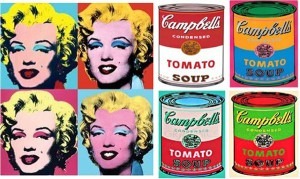
A modern art style that started back in the 1950s and drew inspiration from commercial and consumer aspects of everyday life, especially in American culture. Such imagery included advertising, mass media, comic books, celebrities, and elements of popular culture, like magazines, movies, and even bottles and cans. Specific works of art created by Andy Warhol and Roy Lichtenstein are examples of pop art.
Portfolio (art)
(Also called Artist Portfolio.)
A collection of an artist’s best original artwork presented in a cohesive and professional manner. It showcases their skills, style, and creative voice.
Types of Portfolios:
-
- Traditional Portfolios: In the past, artists would create physical portfolios with actual paintings, drawings, or photographs. These were carefully arranged in folders or binders.
- Digital Portfolios: With technology and digital media, many artists now choose to showcase their portfolios online. Websites, social media platforms, and specialized portfolio tools allow artists to reach a global audience.
Portrait
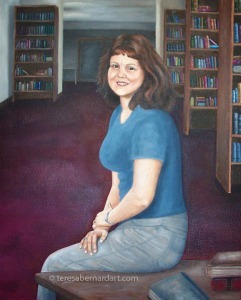
An artistic representation of a person, particularly their face. A portrait of an individual can be of just the face, the head and shoulders, or the entire body. In a traditional portrait, the subject is often depicted in a still pose, typically gazing directly towards the artist. Aside from likeness, the essence of a portrait conveys the subject’s mood and personality. This genre includes group portraits (consisting of more than one person), and self-portraits (one in which the artist does an artwork of themself). For more on people and portraits, click here.
Positive Space
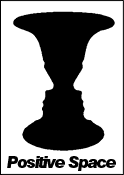
Refers to the areas of interest and focus within a piece of artwork. It often includes the main subject, such as a person, landscape, or an object. In the example of the vase, positive space (the area in black) is the form itself, i.e., the vase, The opposite is negative space, which surrounds the subject and points of interest, often appearing empty or lacking detail.
Post-Impressionism
A French art movement from 1886-1905, emerged as a response to Impressionists’ naturalistic depiction of color and light. Led by artists like Cézanne, Gauguin, van Gogh, and Seurat, it rejected naturalism and focused on expressive use of color and form, emphasizing volume, picture structure, and expressionism to create emotional experiences through symbolism and captivating forms.
Potter
A craftsman who works with clay to create pottery. They shape and mold clay into functional or decorative objects like cups, bowls, and vases. Potters also apply glazes and fire their creations in kilns to make them durable.
Potter’s Wheel
A machine used in shaping clay into round ceramic ware. As a potter works, the wheel’s circular plinth or wheel head rotates, allowing them to apply pressure against the centrifugal force of the clay. This shaping process is known as throwing. The wheel can be operated manually or with an electric motor. It’s a fundamental tool for creating symmetrical and evenly shaped pottery.
Pottery
One of the oldest and most widespread forms of decorative art. It involves creating objects from clay, which are then hardened through firing. These objects can be both functional (such as vessels for holding liquids) and aesthetic (like plates or bowls). The process of pottery allows artists to mold and shape clay into various forms, from simple vessels to intricate sculptures.
Pre-Columbian Art
Refers to the visual arts produced by the indigenous peoples of the Americas, including those from the Caribbean, North, Central, and South America, prior to the arrival of European explorers and colonists. This rich artistic heritage covers an extensive period, from approximately 13,000 BCE to the European conquests of the 16th century.
Pre-Raphaelite Brotherhood (PRB)
A 19th-century art movement that emerged in England. PRB was founded in 1848 by a group of visionary artists, poets, critics, and playwrights. Their name itself reveals their mission: they sought to break away from the artistic conventions championed by the Royal Academy, which primarily celebrated classical compositions influenced by the Italian Renaissance master Raphael. Instead, the Pre-Raphaelites looked back to an earlier period—before Raphael’s time—for inspiration. They believed that the art of the early Italian masters held a purity, sincerity, and directness that had been lost in subsequent centuries.
Precisionism
A significant modernist art movement that emerged in the United States after World War I. Precisionism drew inspiration from several European modernist movements, including Cubism, Purism, and Futurism. Artists associated with Precisionism sought to distill their subjects down to their essential geometric shapes, emphasizing clarity and precision. Unlike some European movements, Precisionism embraced its American identity. Artists were proud of their nation’s industrial achievements and conveyed this through their work.
Prehistoric Art
All artwork created in preliterate, prehistoric cultures. Originating in the Stone Age, it covers both the Paleolithic and Neolithic periods. This ancient art consists of cave paintings, figurines, engravings, and sculptures, and is significant for predating the invention of written language.
Primary Colors
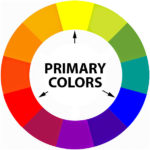
Red, yellow, and blue colors used in painting and other fine arts. The primary colors, derived solely from natural pigments, are the purest and most essential forms of color that cannot be created by mixing any other colors. The color wheel displays these three primary colors at evenly spaced intervals. They serve as the foundational elements for mixing all other colors on an artist’s palette.
Primitive Art
Artworks produced in tribal societies across the globe. Examples of primitave art would be cave paintings from the Stone Age, wooden sculptures by Native American Indians, Aboriginal engravings, and vibrant African tribal art. It’s a glimpse into the creative past—a time when people were more connected to nature and each other.
Principles of Design
The foundational guidelines that shape how artists and designers create visually appealing and effective compositions. An artist’s understanding and application of these principles determines the strength or weakness of their compositions.
The principles of design include:
-
- Balance: Balance is all about equilibrium. It ensures that a design feels stable and harmonious.
- Contrast adds spice to design. It involves juxtaposing different elements—such as light and dark, big and small, or rough and smooth—to create visual interest.
- Emphasis ensures that certain parts of a composition stand out.
- Movement guides the viewer’s eye through a design. It’s like a visual dance, leading you from one element to another. Whether it’s through lines, curves, or implied motion, movement keeps things dynamic.
- Proportion deals with size relationships. It ensures that elements are appropriately sized relative to one another.
- Repetition creates patterns and consistency. Repeating certain elements—like colors, shapes, or fonts—ties a design together.
- Visual economy (or Simplicity) involves omitting non-essential or unimportant elements and details. The goal is to emphasize what truly matters in a composition.
- Space is the element of art that refers to interval or measurable distance between, around, above, below, or within shapes and forms in an art piece.
- Unity: Unity brings everything together. It ensures that all elements in a design feel connected and cohesive.
- White Space (or Negative Space) isn’t wasted space; it’s intentional breathing room. It allows elements to breathe, prevents clutter, and enhances readability.
Print (artist’s print)
An original work created with printmaking techniques such as lithography, etching, woodcut, and screen printing. It enables artists to create many versions of their work while ensuring uniformity and accessibility. The print is usually a limited edition, numbered and signed by the artist.
Printmaking
An art form that involves transferring images from a template to another surface, usually paper or fabric. Traditional techniques include woodcut, etching, engraving, and lithography. Modern artists have expanded the repertoire to include screen printing as well. Templates made from wood, metal, or glass are processed to create the intended design. Once inked, the design is transferred onto a surface using controlled pressure, typically from a printing press. The final print usually appears as a reverse of the original template design. A notable feature of printmaking is the ability to produce multiple impressions from a single template, enabling the creation of editions of the artwork.
Prismatic Colors
The pure, transparent colors of sunlight refracted through a prism. Imagine the vibrant hues you see when light passes through a crystal or glass prism—those are the prismatic colors!
Process Color Printing
A type of printing method that uses four or more standard inks (Cyan, Magenta, Yellow, and Black) to create thousands of colors, commonly known as CMYK, four-color process, 4/c process, or just process. Also see “CYMK.”
Proportion
A design principle in art that compares the relationship between the size of one element to another. Often, it goes unnoticed until something seems “off,” which usually means it’s “out of proportion” when the size relationship between two elements looks incorrect.
Public Art
Refers to art created for the general public, often installed in outdoor or indoor public spaces. It is available to all and can manifest in different forms such as sculptures, murals, and site-specific installations. Public art has several objectives: it enhances spaces, provides education, commemorates events, and reflects the spirit of the community.
Pure Symmetry
A type of formal balance where elements of a design are exact mirror images across a symmetry line, whether this line is visible or not. Symmetry is a prevalent feature in both geometric patterns and natural forms, as seen in the symmetrical shapes of leaves, flowers, and the wings of butterflies.
You May Also Like
This list vocabulary of art terms and definitions is provided as a valuable resource for art enthusiasts. If you like the information here and find it helpful, please consider purchasing a painting. Your support helps to cover the cost of keeping this art onomasticon online. Simply click or tap the thumbnail link of any Teresa Bernard oil painting to view additional details.
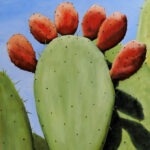
(2021)
9″ w x 12″ h

(2023)
9″ w x 12″ h
Art Glossary Quick Links
Contributing to The Art Dictionary
The art terms vocabulary list is a work in progress. New terms and definitions are added on a regular basis. If you know of an art term and definition that isn’t already listed in it but you believe it should be, send it to us and we’ll consider adding it. We’ll let you know if we do. Thanks!
Thanks for reading this!
